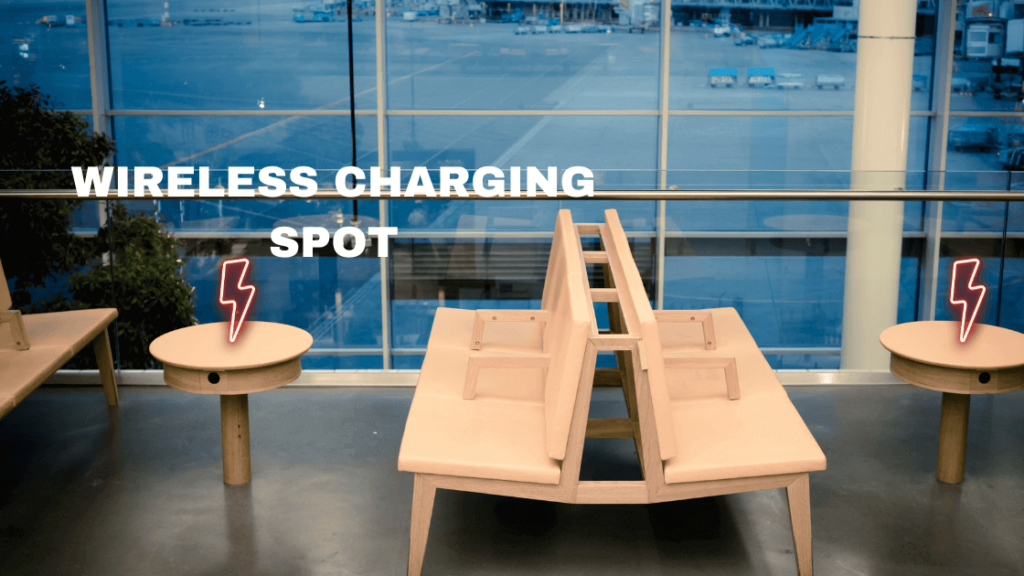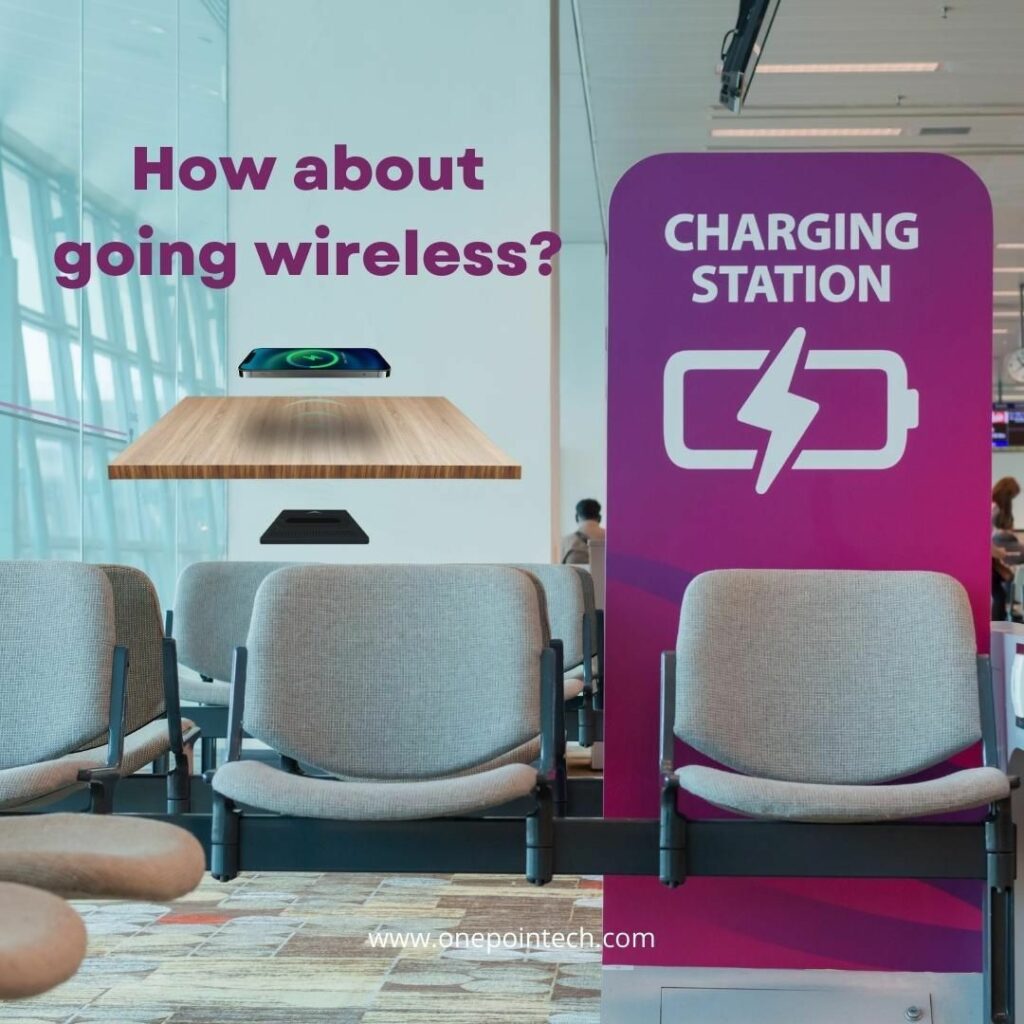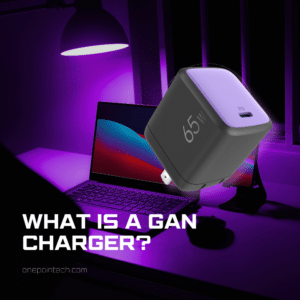As we go about our daily lives, one thing we always have in hand is our smartphones. We rely heavily on it to stay connected and productive throughout the day. However, the battery life can often be a limiting factor, especially during a daily commute where access to charging outlets may be limited.
That’s where invisible wireless charging comes in. The invisible wireless charger is a device that can charge smartphones in a long-range of up to 50mm, making it great to be installed in public transportation like train or subway cars, buses, waiting areas, and airports.
This cutting-edge technology allows commuters to charge their devices on the go, without the hassle of carrying cables or finding an outlet. And when it’s incorporated into public transportation systems, it has the potential to revolutionize the commuter experience by providing a convenient and sustainable way to stay connected throughout your journey.
In this blog post, we’ll explore the benefits of invisible wireless charging in public transportation and how it can improve the commuter experience. We’ll also take a look at where can we install the long-range wireless chargers and some real-world examples of wireless charging in action, as well as discuss the future possibilities of this technology. So, let’s dive in and discover how invisible wireless charging can make our daily commutes a little more enjoyable.
Places to install under-table wireless chargers and the benefits
Under-table wireless chargers can be installed in various areas of public transportation that have tables or surfaces that commuters can use. Below are some examples:
Train or subway cars
Improved passenger experience: Commuters often spend long periods of time on trains or subways, and having a convenient and reliable way to charge their phones can improve their overall experience.
Increased productivity: By providing wireless phone chargers, commuters can use their phones without worrying about battery life, which makes them more productive or entertained during their commute.
Reduced clutter: Under-table wireless chargers eliminate the need for cables or power outlets, reducing clutter on the train or subway and making it easier for passengers to move around.
Buses
Improved safety: Bus drivers may be distracted by passengers who are searching for power outlets or tangled in cords. By providing under table wireless chargers, passengers can safely charge their phones without getting in the way of the driver.
Improved passenger experience: Bus rides can be long and uncomfortable, and having a convenient way to charge devices can help make the ride more comfortable and enjoyable for passengers.
Increased efficiency: With under table wireless chargers, passengers won’t have to waste time searching for power outlets or waiting for their devices to charge, potentially making the bus ride more efficient overall.
Waiting areas
Public transportation waiting areas
Bus and train stations: Many bus and train stations have indoor or outdoor waiting areas where passengers can wait for their ride.
Airports: Airports often have waiting areas for passengers who are waiting for their flight or for transportation to and from the airport.

Ferry terminals: Ferry terminals may have waiting areas for passengers who are waiting to board their ferry.
Park and ride facilities: Park and ride facilities are often located on the outskirts of cities and provide a place for commuters to park their cars and take public transportation into the city.
Transit hubs: Transit hubs are locations where multiple forms of public transportation converge, such as train stations or bus terminals.
Benefits of installing invisible wireless chargers
Improved customer satisfaction: Waiting areas can be boring and uncomfortable, and having a convenient way to charge devices can improve the overall experience for customers.
Increased dwell time: By providing under table wireless chargers, customers may be more likely to stay in the waiting area longer, potentially increasing their likelihood of making purchases or using other services offered in the area.
Increased foot traffic: By promoting the availability of under table wireless chargers in waiting areas, public transportation systems may attract more customers who are seeking this convenience.
Real-world examples of installing wireless chargers in public transportation
New York City Subway: In 2017, the Metropolitan Transportation Authority (MTA) in New York City installed wireless charging stations in six subway stations as part of a pilot program. The charging stations were placed on walls and columns and allow commuters to charge their phones wirelessly while waiting for their train.
London buses: In 2015, Transport for London (TfL) began a trial of wireless charging technology on some of its buses. The technology allowed commuters to charge their phones wirelessly by placing them on a pad installed on the seat. The trial was successful, and TfL has since expanded the program to include more buses.
Dallas Fort Worth International Airport: In 2019, the Dallas Fort Worth International Airport installed wireless charging stations in its terminals as part of a program to improve the passenger experience. The charging stations are located throughout the terminals and allow passengers to charge their phones wirelessly while waiting for their flights.
Dubai Metro: In 2021, the Dubai Metro announced plans to install wireless charging pads on its trains to allow passengers to charge their phones while commuting. The charging pads will be placed on seats and will allow passengers to charge their phones wirelessly by placing them on the pad.
Hong Kong MTR: In 2020, the Hong Kong Mass Transit Railway (MTR) installed wireless charging pads on trains and in stations as part of a pilot program. The charging pads were placed on seats and on tables in waiting areas and allow passengers to charge their phones wirelessly while commuting or waiting for their train.
These cases demonstrate the growing trend of installing wireless charging technology in public transportation systems to improve the passenger experience and provide greater convenience for commuters.
Future of invisible wireless charging in public transportation
The future of invisible wireless charging in public transportation looks promising as more and more commuters rely on their smartphones for communication, entertainment, and work while on the go. Let’s explore what it makes look like for potential advancements and possibilities for the future of this technology.
Integration with public transportation apps
In the future, wireless charging technology could be integrated with public transportation apps, so that commuters can locate charging stations and view real-time availability. This would make it easier for commuters to plan their trips and ensure that they have a fully charged phone while on the go.
Increased charging speeds
As technology advances, wireless charging speeds are likely to increase. As of for now, the typical charging speed is 10w and 15w. In the future, it could charge faster and more efficiently than this. The development of more powerful and efficient wireless chargers will be available for installations in a wider range of public transportation settings.
Expansion to other devices
While wireless charging technology is primarily designed for smartphones, it has the potential to be adapted for other devices like tablets, laptops, and wearable technology.
Integration with other technologies
Wireless charging technology could be integrated with other technologies, like augmented reality and smart sensors, to provide commuters with a more seamless and personalized experience. For instance, commuters could receive notifications on their phone about upcoming stops or delays while also being able to charge their phone wirelessly.
Expansion to more public transportation systems
As wireless charging technology becomes more widely adopted, it is likely to be installed in more public transportation systems around the world, making it easier for commuters to stay connected while on the go.
Conclusion
Invisible wireless charging technology has the potential to greatly enhance the commuter experience in public transportation systems by providing a convenient and efficient way for passengers to charge their smartphones on the go.
The installation of under table wireless chargers in train or subway cars, buses, and waiting areas can make a significant difference in the overall passenger experience. The benefits of this technology include increased convenience, reduced clutter and cable management, and improved safety.
The future of invisible wireless charging in public transportation looks promising and will provide a better commuting experience for passengers in the coming years.





